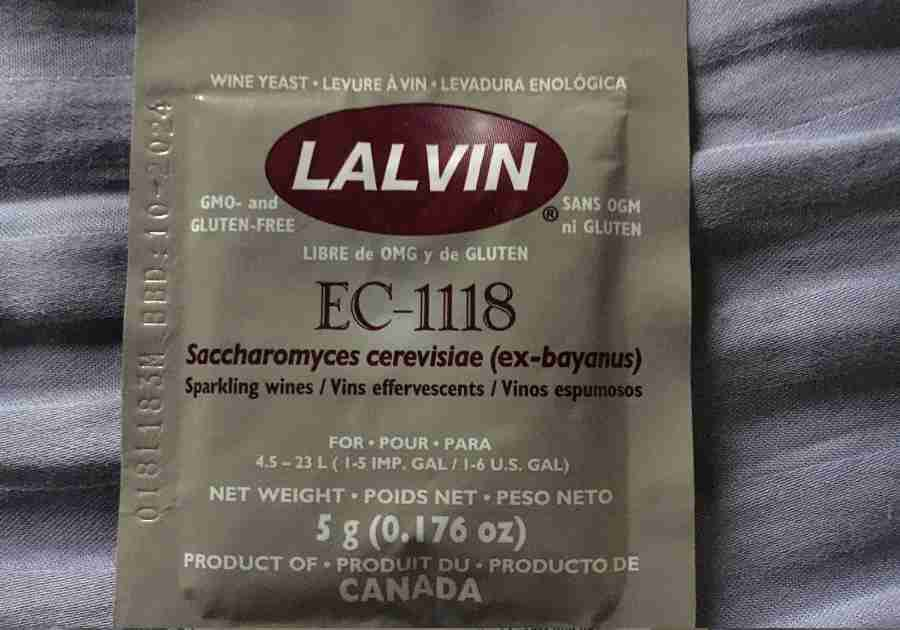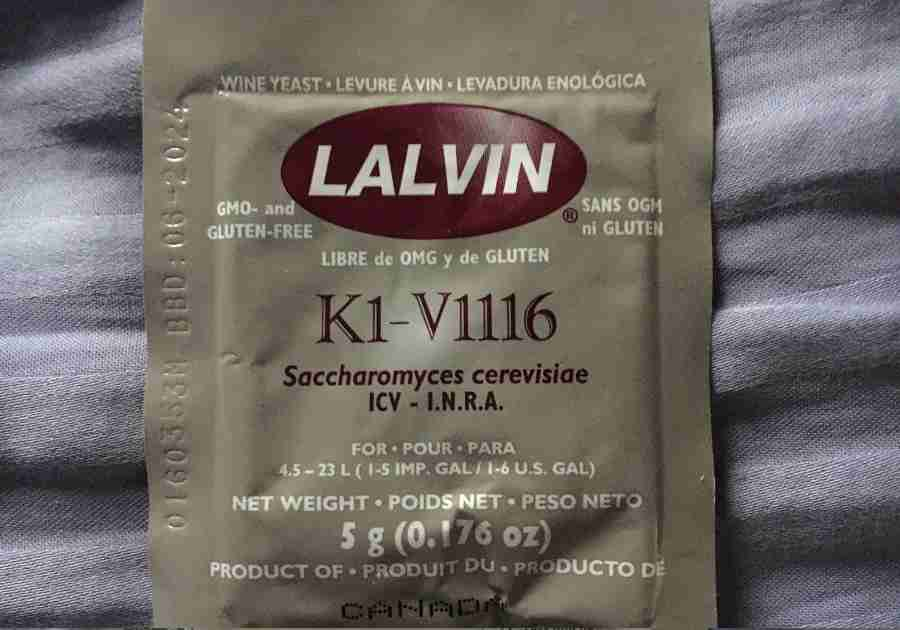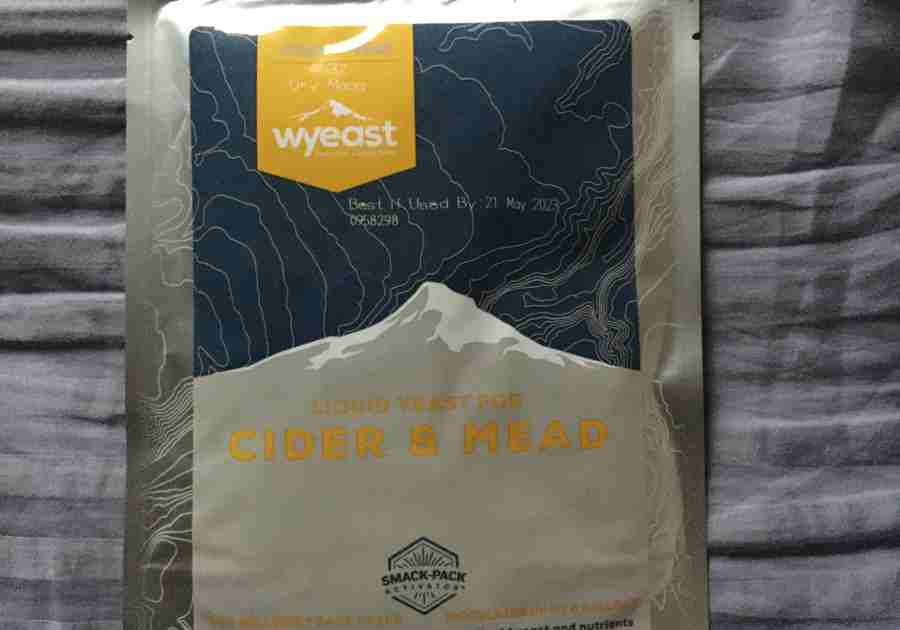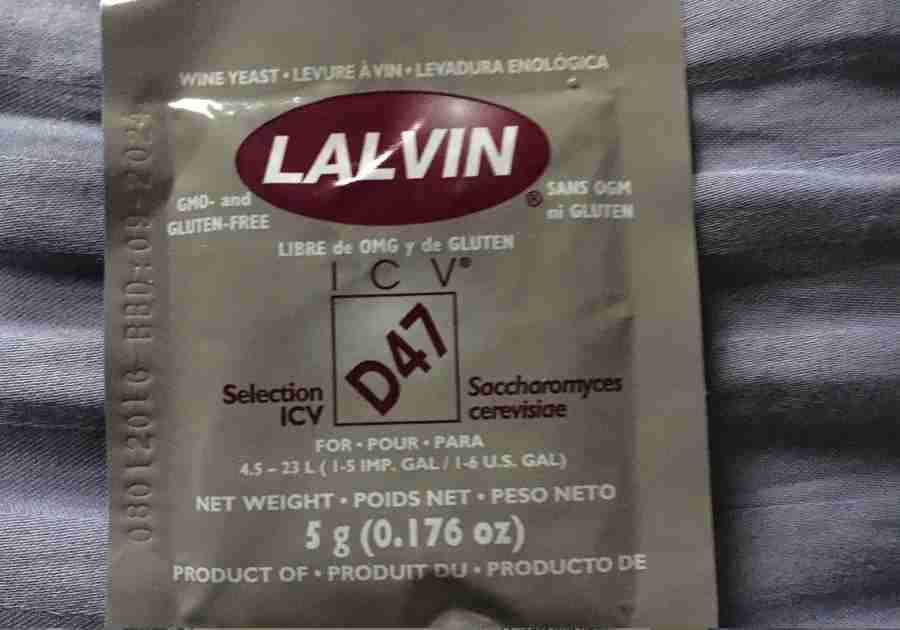So you’ve done a few batches of mead and you’re looking to test your limits. You pose the question, how high can I go with a mead’s abv? You start making a list of materials to get and wonder, what is the best yeast to use for a high alcoholic mead? This is a serious consideration because the yeast that you use is one of the biggest determinants in what your final abv is.
The best yeast for high alcohol mead is Lalvin EC 1118. EC 1118 has a very high alcohol tolerance, a large temperature range it will ferment in, has a very fast fermentation, and will out compete any other kind of organism vying to ferment in your vessel.
If you’re simply looking to get the max alcohol out of your mead, EC 1118 would be the yeast that I would use. That being said, there’s a number of drawbacks with using it. Chief among these drawbacks is that it leaves little room for any sweetness. It ferments everything and has a tendency to blow off subtle flavors in the fermentation. So while it certainly will leave you with a high abv, it may not be your best option if you’re trying to go for some distinct flavors in your mead.
What type of mead are you making?
When you’re trying to figure out what the best yeast to use in your mead, you have to have an idea of what type of mead you want to make. Some yeasts work better with a certain style than other yeasts. Some yeast works great with a high alcohol dry mead, while others are perfect for a light fruity mead. Still others work best for a blend between the two extremes.
When it comes to the yeast to use for a high alcohol mead, first ask yourself if you want to make one. I have made high alcohol meads and I found that they come out tasting like rocket fuel and need some years of aging to get them tasting right. While it’s fun to have a bottle of something that will be around 18 percent abv, I find it better to sometimes sacrifice some abv for a better all around mead. If I make a mead around 14 percent abv, it’s still got a great kick to it and I can get a better flavor profile to go with it.
The reason I bring this up is because when I first started my friend and I thought we would just dive into making the most alcoholic mead possible. It didn’t turn out that great because we were inexperienced and lacked patience to drink the mead before it mellowed. We would have been better served with a lighter mead that tasted better and still got us good and drunk.
For the experienced mead maker out there that has done it all and wants to test himself, prepare yourself for the long haul.
Yeast alcohol tolerances
While yeast is doing its job in creating more alcohol and co2 in the must, the environment it’s in starts to get worse and worse for making alcohol. Yeast has a limit to the amount of alcohol it can withstand before it stops doing its job. This is why you can’t just put yeast in and come out with higher abv with higher amounts of sugar.
If you’re making a high alcohol mead, you’re going to want a yeast with a high alcohol tolerance. A lot of mead yeasts are around 11-14% abv and work great for a sweeter mead, but if you want to push it up higher, you’re gonna need a yeast that is closer to 18% abv.
While the stated tolerance of these yeasts isn’t exact, a lot of recipes out there call for other types of yeast such as bread yeast and ale yeast. While you can stretch the capabilities of these yeasts, again, if you want to go to the upper teens you’re going to need a yeast designed for that.
High alcohol yeast varieties
Below I’ll go over the best yeast options for a high alcohol mead, and a few other ones to consider. Each of these yeasts have slightly different characteristics that will be useful to you for one style or another.
EC-1118
This yeast produces a dry, strong mead that ferments very fast and causes a lot of subtle flavors to be bubbled off. This yeast is good because it can ferment in a large range of temperatures, great for people who don’t have temperature controls on their fermentation. It also will inhibit wild yeasts from fermenting by out-competing them. This can be used sometimes if you think there’s some kind of infection starting. Throw some of this in and it might save a bad batch.
Alcohol tolerance: 18%
Temperature range: 45-96 degrees F
K1-V1116
This yeast is another strong fermenter that can out compete other wild yeasts that may be present. However this strain seems to retain and even accentuate fruity flavors and aromas. This is a perfect strain if you are making a melomel, cyser, or other fruit mead and still want to push the abv to the limit. This strain seems to like cooler temperatures and has a smaller temperature range than the ec-1118. This is the strain that I like to use a lot because I enjoy making high abv melomels.
Alcohol tolerance: 18%
Temperature range: 59-86 degrees F
Wyeast 4632
Another yeast that is great for making a high abv dry mead. This yeast comes in a pouch that will expand upon hitting it and allow you to pour liquid right into the must. This allows you to skip the whole activating the yeast from the packet. Has a smaller temperature range than the yeast strains listed above.
Alcohol tolerance: 18%
Temperature range: 55-75 degrees F
D-47
Throwing this on here because it’s a very common yeast strain that people use. It will impart a sweeter mead that retains the honey taste in your mead. It ferments quickly with little foam and will still give you a good abv. The thing to consider with d-47 is you should really consider using a type of temperature control for your fermentation. If the temperature is over 68 degrees F, it will get stressed and start putting out some off flavors. Works great for metheglin I make in the late fall/early winter.
Alcohol tolerance: 14%
Temperature range: 59-68 degrees F
Conclusion
If you want to make a high abv mead, you need the right yeast strain. If you’re making a dry mead that you don’t mind aging for a while, give the EC-1118 a go. If you want to make a high abv melomel, give the K1-V1116 a try. These are what I’ve used in the past to make great meads and they work well.




